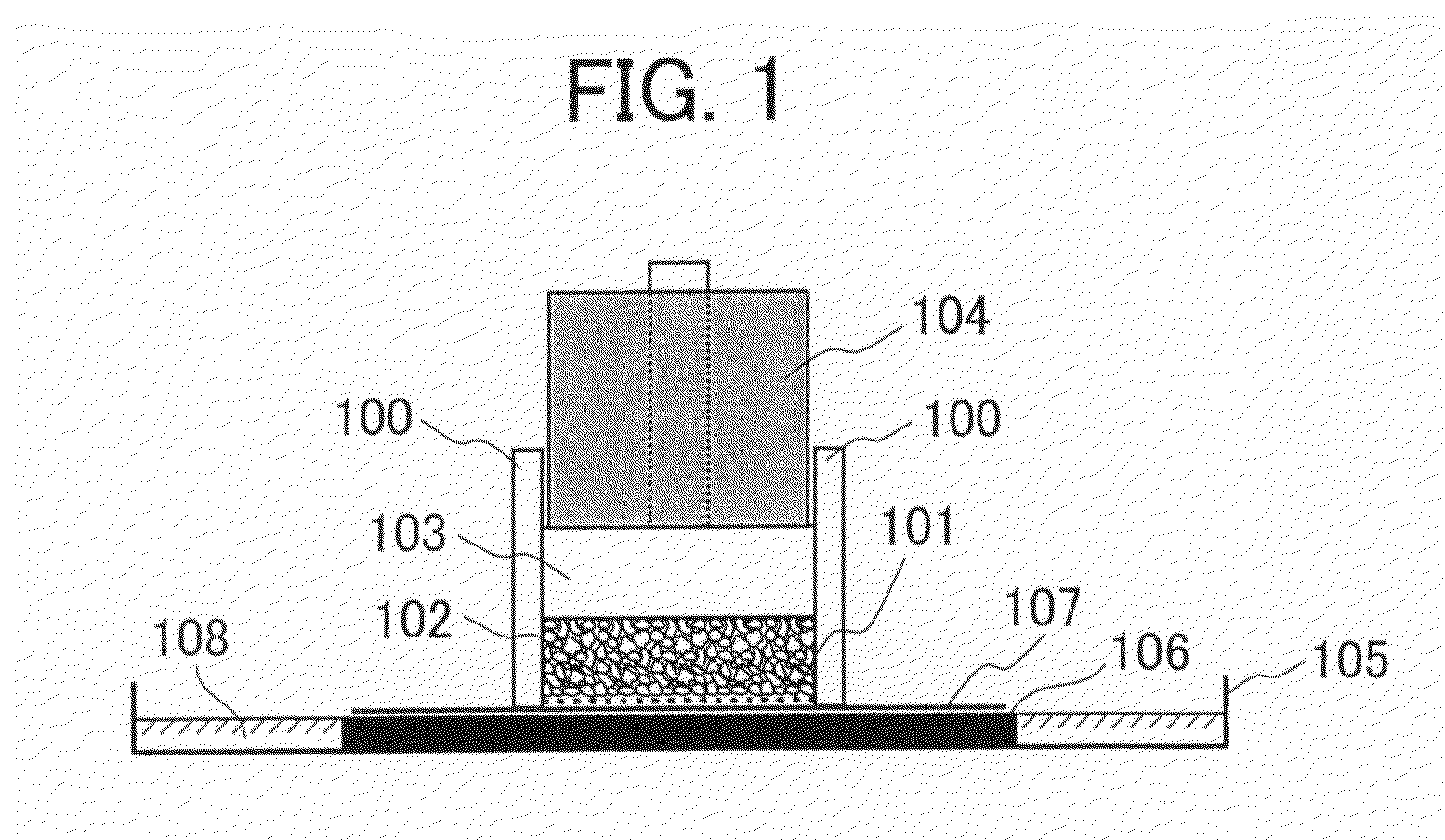Water-absorbing resin and method for manufacturing the same
- Summary
- Abstract
- Description
- Claims
- Application Information
AI Technical Summary
Benefits of technology
Problems solved by technology
Method used
Image
Examples
reference example 1
[0178]In a reactor including a lid and a jacketed stainless steel twin-arm kneader having two sigma blades and a capacity of 10 L, 530.2 g of acrylic acid, 4364.2 g of a 37 mass % sodium acrylate aqueous solution, 553.7 g of pure water, and 7.7 g of polyethylene glycol diacrylate (molecular weight 523) were dissolved. Thus, reaction liquid was prepared.
[0179]Next, this reaction liquid was degassed for 20 minutes with nitrogen. gas while being adjusted to 25° C. Then, 19.6 g of a 15 mass % sodium persulfate aqueous solution and 24.5 g of a 0.1 mass % L-ascorbic acid aqueous solution were added to the reaction liquid while stirring. About one minute later, polymerization started. Here, the initiation temperature of the polymerization was 25.2° C.
[0180]Then, the polymerization was carried out at 25° C. to 95° C. while the produced gel was being crushed. Hydrated gel crosslinked polymer was taken out 30 minutes after the polymerization started. The obtained hydrated gel crosslinked poly...
example 1
[0182](Polymerization)
[0183]A solution (A) was prepared by mixing, in a 1 L polypropylene resin container, (i) 293.1 g of acrylic acid, (ii) 1.1 g of polyethylene glycol diacrylate (average molecular weight 522) as the internal crosslinking agent, (iii) 1.8 g of a 1 mass % diethylenetriamine pentaacetic acid pentasodium aqueous solution as the chelating agent, and (iv) 3.6 g of a 1.0 mass % acrylic acid solution of IRGACURE (Trademark) 184 as the polymerization initiator. Moreover, a solution (B) was prepared by mixing (i) 237.65 g of a 48.5 mass % sodium hydroxide aqueous solution and (ii) 251.82 g of ion exchanged water whose temperature was adjusted to 50° C. 54 g of the water-absorbing resin (A) obtained in Reference Example 1 was added to the solution (A) which was being stirred at 500 r.p.m. using a magnetic stirrer chip having a length of 50 mm, and then the solution (B) was quickly added and mixed. Thus, a monomer aqueous solution (C) was obtained. The temperature of the mon...
example 2
[0192]In the present Example, a particulate water-absorbing resin (2) was obtained in the same manner as Example 1 except that the amount of polyethylene glycol diacrylate (average molecular-weight 522) was 0.75 g and the amount of the water-absorbing resin (A) obtained in Reference Example 1 was 72 g. Physical properties of the particulate water-absorbing resin (2) were shown in Table 1.
PUM
| Property | Measurement | Unit |
|---|---|---|
| Temperature | aaaaa | aaaaa |
| Temperature | aaaaa | aaaaa |
| Percent by mass | aaaaa | aaaaa |
Abstract
Description
Claims
Application Information
 Login to View More
Login to View More - R&D
- Intellectual Property
- Life Sciences
- Materials
- Tech Scout
- Unparalleled Data Quality
- Higher Quality Content
- 60% Fewer Hallucinations
Browse by: Latest US Patents, China's latest patents, Technical Efficacy Thesaurus, Application Domain, Technology Topic, Popular Technical Reports.
© 2025 PatSnap. All rights reserved.Legal|Privacy policy|Modern Slavery Act Transparency Statement|Sitemap|About US| Contact US: help@patsnap.com

